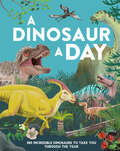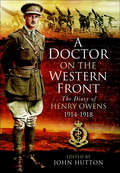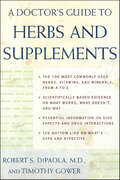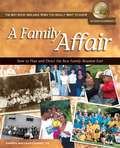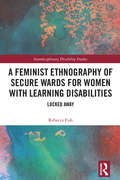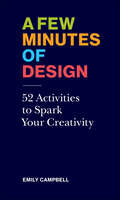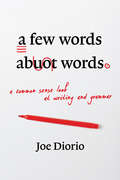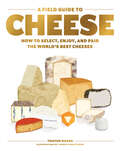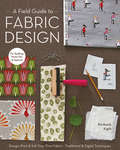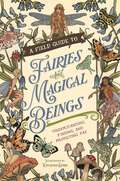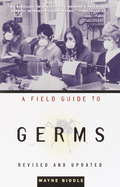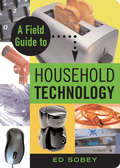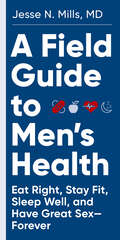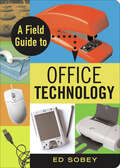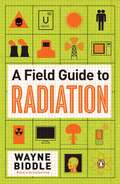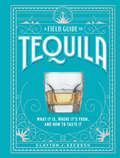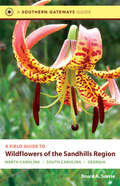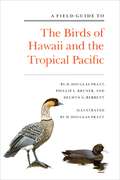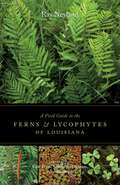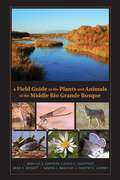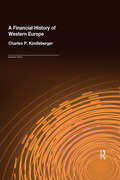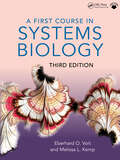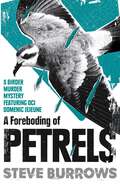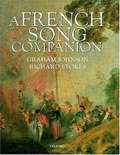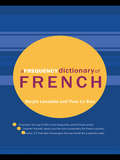- Table View
- List View
A Dinosaur a Day: 365 Incredible Dinosaurs to Take You Through the Year
by Miranda SmithDiscover a new dinosaur for every day of the year! The perfect gift for dinosaur fans ages 6 and up.New day, new dino! Immerse yourself in this unforgettable year-long encounter with the most astonishing creatures ever to walk the Earth.In this gorgeous calendarized collection, you&’ll find familiar and lesser-known names—from ferocious Tyrannosaurus to armored Ankylosaurus—alongside newly discovered species, all brought to life with stunning illustrations and fascinating facts.Prepare to encounter some familiar reptilian faces, as well as learn about new-to-you dinosaurs that might become new favorites. With 365 dinosaurs to take you through the year, this is the quintessential introduction to all things dinosaur.It's the ultimate gift for any dino lover, from age 6 to 106!
A Doctor on the Western Front: The Diary of Henry Owens, 1914-1918
by Henry OwensHenry Owens Great War diary provides a vivid and complete narrative, seen from the perspective of an army doctor, of what it was like to live and fight in the trenches of the Western Front. Owens, a member of the original British expeditionary Force, the Old Contemptibles, was among the first British soldiers to set foot in France. He spent the next four years in the front line as a doctor and a diarist, an eyewitness to some of the most bitter and violent struggles of the greatest conflict the world had ever seen. His writing, edited and with a full introduction by John Hutton, gives us an inside view of the duties and experiences of a doctor tending the fighting troops, and it paints a graphic portrait of the daily lives of the men themselves. Henry Owens was born into a doctors family in Long Stratton, Norfolk in 1889. When war was declared in 1914, he joined the Royal Army Medical Corps and was sent to France with the British Expeditionary Force. He served as a front-line medical officer throughout the conflict and he kept a diary and notes. After the war he used this material to assemble this meticulous account of his experiences. After being demobilized in 1919 he returned to civilian medical practice and married, but he died after a sudden illness in 1921, aged just 31. After the death of his wife in 1980, the diary came into the possession of the Imperial War Museum.
A Doctor's Guide to Herbs and Supplements
by Robert S. DiPaola Timothy GowerA scientific yet accessible guide to herbs, vitamins and minerals, co-written by a physician whose herbal therapy study was published in The New England Journal of MedicineWhat was once considered alternative medicine has made its way into the mainstream; half of all Americans have tried some from of complementary medicine, and more than $15 billion is spent annually on natural remedies. It is no surprise, then, that there's a tremendous amount of misinformation on the subject, leaving consumers searching for a solid and reliable book. A Doctors Guide to Herbs and Supplements is that book, providing readers with the scientifically documented facts they need to make informed decisions about taking herbs and supplemnents. Based on up-to-date medical research, this comprehensive guide explains what these compounds are and demystifies how they do-or don't- work.At the heart of the book are A to Z entries for the 100 most commonly used medicinal herbs and nutritional supplements. Each entry details what the herb or supplement is, if and how it works, who shouldn't use it, and how it may interact with other medications. Focusing on consumer safety, Dr. DiPaola offers a checklist of questions anyone should ask before using a medicinal herb, including:*Am I currently taking a prescription medication?*Do I have any underlying medical conditions?*What does this label tell me? And what doesn't it say?An invaluable reference, A Doctors Guide to Herbs and Supplements is the ideal choice for the busy consumer looking for a concise, user-friendly book about the most commonly used natural remedies and revitalizers.
A Family Affair
by Sandra Maclean CluniesWhether planning a small annual get-together or a once-in-a-lifetime gathering of hundreds, A Family Affair is a step-by-step guide to the planning, promotion, execution and documentation of the best family reunion ever. Filled with hundreds of practical and specific instructions, A Family Affair carefully guides the reader through: The steps to set up a family reunion (establishing a purpose and budget, contacting relatives, planning the place and time). Making people aware of it (by snail mail, e-mail, and phone; dealing with grumpy uncles). Running the reunion (kids, food, events, and pictures). Following up with memories that participants will treasure (pictures, stories, and more). The book is arranged in logical step-by-step sequence. There are checklists and forms to simplify the paperwork, websites and other references for further information on topics of special interest, and tips from others who have held successful reunions.
A Feminist Ethnography of Secure Wards for Women with Learning Disabilities: Locked Away (Interdisciplinary Disability Studies)
by Rebecca FishWhat is life like for women with learning disabilities detained in a secure unit? This book presents a unique ethnographic study conducted in a contemporary institution in England. Rebecca Fish takes an interdisciplinary approach, drawing on both the social model of disability and intersectional feminist methodology, to explore the reasons why the women were placed in the unit, as well their experiences of day-to-day life as played out through relationships with staff and other residents. She raises important questions about the purpose of such units and the services they offer. Through making the women’s voices heard, this book presents their experiences and unique perspectives on topics such as seclusion, restraint, and resistance. Exploring how the ever present power disparity works to regulate women’s behaviour, the book shows how institutional responses replicate women’s bad experiences from the past, and how women’s responses are seen as pathological. It demonstrates that women are not passive recipients of care, but shape their own identity and futures, sometimes by resisting the norms expected of them (within allowed limits) and sometimes by transgressing the rules. These insights thus challenge traditional institutional accounts of gender, learning disability and deviance and highlight areas for reform in policy, practice, methodology, and social theory. This ground-breaking book will be of interest to scholars, students, policymakers and advocates working in the fields of learning disability and disability studies more widely, gender studies and sociology.
A Few Minutes of Design: 52 Activities to Spark Your Creativity
by Emily Campbell&“A series of deceptively simple—and fun—exercises . . . A marvelous invitation to anyone with an interest in creativity, invention, and design.&” —Michael Bierut, Partner, Pentagram, New York Even concert pianists do warm-up exercises to limber up the fingers and clear the mind for the performance ahead. Designers are, or should be, no different. This delightful collection provides fifty-two exercises or activities to jump-start your creative juices, free you from creative block, start a new project, or finish an existing one. Each exercise offers insight into the innumerable small decisions involved in design. How to join this part to that, how to establish a pattern or continue the series, how to say it without words, what fits, and what doesn&’t? For established practicing designers or creatives in any field, these activities are sometimes playful, sometimes challenging—but always enlightening.
A Few Words About Words
by Joseph J. DiorioHONORED AS A NOTABLE 100 BOOK IN THE 2021 SHELF UNBOUND BEST INDIE BOOK COMPETITIONFINALIST FOR THE 2021 FOREWORD INDIES AWARDSPenned by a writer who had to teach himself the rules of English grammar, A Few Words About Words offers an easy and accessible approach to understanding and using the English language.In a world dominated by countless print and social media outlets, written communication is king. Writing "your" when you mean "you're" and "there" when you mean "they're" can make the difference between getting or not getting new business. A missing comma can result in a PR catastrophe, and a well-written line can be remembered for generations. And yet, many native speakers struggle with the English language.Spawned from the widely-circulated and beloved newsletter of the same name, Joe Diorio's A Few Words About Words blends quick-witted anecdotes from more than 30 years of newsletter entries that highlight the common, uncommon, and surprising grammar mistakes most English speakers make. The result is a digestible, all-encompassing look at English grammar.Humorous, enlightening, and completely comprehensible, A Few Words About Words will be the go-to grammar guide you pick up and can't put down.
A Field Guide to Cheese: How to Select, Enjoy, and Pair the World's Best Cheeses
by Tristan SicardA Field Guide to Cheese is the ultimate guide to the world of cheese and the only fully illustrated cheese reference. This tour de fromage begins with a history lesson on the creation of cheese, offers a primer of the many types of milks and categories of cheeses, and then leads readers to an encyclopedic survey of over 400 global cheeses. There are cheeses we all love like feta and fontina, Gouda and mozzarella, Pecorino Romano and chèvre—but also rarities like King River Gold, a washed-rind cheese from Australia; Dancing Fern, a raw cow’s-milk cheese from Tennessee; and Danbo, a semisoft, aged cheese from Denmark. Find cheeses that are best for melting, like hushållsost; those that are best served alone, such as bovški sir; and those that are the stinkiest, like Allgäuer Weisslacker. There are cheeses with natural rinds, floral rinds, and soft rinds; curd cheeses; spreadable cheeses; pressed cheeses; whey cheeses; fresh cheeses; and more! A global collection of maps place each cheese to its origin, and readers can take their knowledge even further by reading up on the microbial life of cheese and the science behind our tasting palates. Packed with information, this book is for professional cheesemongers just as much as it is for those with a simple love of cheese.
A Field Guide to Fabric Design: Design, Print & Sell Your Own Fabric; Traditional & Digital Techniques
by Kimberly KightA comprehensive, step-by-step resource for fabric design and printing—including tips from top designers. If you&’ve ever dreamed of showing your designs on fabric, textile aficionado Kim Kight, of popular blog True Up, is here to teach you how. Comprehensive and refreshingly straightforward, this impressive volume features two main parts. First, the Design and Color section explains the basics with step-by-step tutorials on creating repeating patterns both by hand and on the computer. Next, the Printing section guides you through transferring those designs on fabric—whether it's block printing, screen printing, digital printing or licensing to a fabric company—and how to determine the best method for you. Includes extensive photos and illustrations
A Field Guide to Fairies and Magical Beings: Understanding, Finding, and Protecting Fae
by Kayleigh EfirdThe vintage fairy-finding manual for modern-day believers Rediscover a world where Fairies abound with this delightfully illuminating, illustrated field guide. Whether you’re Fae-curious or Fae-obsessed, this unearthed and adapted collection of nineteenth-century lore is the ultimate resource for your next magical expedition. It’s packed with useful tracking and conservation tips to help you:- Tap into a secret realm: Scout out Fairy dwellings, grow Fae-friendly plants, and protect the animals and habitats Fairies need to thrive.- Recognize Fairy signs: Decode swirling winds, mysterious music, grass rings, missing trinkets, and other mystical clues.- Explore fearlessly: Avoid the perils of Changelings, Black Dwarfs, and Glaistigs.- Learn from the past: Gather insights from legendary encounters with Fairies, Mermaids, Elves, Kelpies, and the Blue MenOpen your mind and restore your sense of wonder with A Field Guide to Fairies and Magical Beings.
A Field Guide to Germs (Newly Revised and Updated): Revised and Updated
by Wayne BiddleFrom the ravages of the Ebola virus in Zaire to outbreaks of pneumonic plague in India and drug-resistant TB in New York City, contagious diseases are fighting back against once-unconquerable modern medicine. Public concern about infectious disease is on the rise as newspapers trumpet the arrivals of new germs and the reemergence of old ones. In A Field Guide to Germs, Pulitzer Prize-winning science writer Wayne Biddle brings readers face to face with nearly one hundred of the best-known (in terms of prevalence, power, historical importance, or even literary interest) of the myriad pathogens that live in and around the human population. Along with physical descriptions of the organisms and the afflictions they cause, the author provides folklore, philosophy, history, and such illustrations as nineteenth century drawings of plague-induced panic, microscopic photographs of HIV and Ebola, and wartime posters warning servicemen against syphilis and gonorrhea. From cholera to chlamydia, TB to HIV, bubonic plague to Lyme disease, rabies to Congo-Crimean encephalitis, anthrax to Zika fever, and back to good old rhinitis (the common cold), A Field Guide to Germs is both a handy reference work to better understand today's headlines and a fascinating look at the astonishing impact of micro-organisms on social and political history.
A Field Guide to Household Technology
by Ed SobeyIllustrating how a fire alarm detects smoke and what the "plasma" is in a plasma screen television, this fascinating handbook explains how everyday household devices function and operate. More than 180 different household technologies are covered, including gadgets unique to apartment buildings and houseboats. Devices are grouped according to their "habitats"--the living room, family room, den, bedroom, kitchen, bathroom, and basement--and feature a detailed description of what the device does and how it works, as well as a photograph for easy identification. With helpful sidebars describing related technical issues, such as why a cheap dimmer switch can interfere with radio reception, this handbook for curious readers provides carefully detailed descriptions and the history behind many of the older household technologies like toasters and faucets to newer technologies like motion detectors, TiVo, and satellite radio.
A Field Guide to Men's Health: Eat Right, Stay Fit, Sleep Well, and Have Great Sex—Forever
by Jesse MillsDON&’T LEAVE YOUR HEALTH TO CHANCE. Guys, it&’s time to step it up and start taking care of yourselves. Which doesn&’t mean making impossible-to-stick-to changes. Written by one of the leading doctors whose practice is devoted solely to men, A Field Guide to Men&’s Health shows, in the simplest and most effective way possible, how to manage the cornerstones of a healthy life while improving your chances for making it a long one, too. Including: Cardiovascular health—did you know that blood pressure is the most vital of vital signs?Diet and nutrition—follow a formula of 60 percent fruits and vegetables, 30 percent lean proteins, and 10 percent complex carbs for meals, and monitor your waist size to find your ideal weight.Movement, with the best exercise programs for each decade of your life.Sexual health‚ with an owner&’s guide to the penis.Lifestyle, with tips on everything from managing stress—reducing it, embracing it—to the importance of vitamin D.Above all, make these tenets the three pillars of a healthy life: Eat less, move more, sleep more.
A Field Guide to Office Technology
by Ed SobeyWith more than 160 entries detailing everything from the junk buried in desk drawers to that mysterious box blinking away in the coat closet, this practical guide navigates through modern office technology. Each entry includes a functional description of a device (what it is and how it works) as well as particulars on who invented it and how its design has evolved over the years. Devices are grouped according to their habitats--in the conference room, hanging from the ceiling, or connected to a computer--to assist in quick and easy identification. Solving office mysteries, such as why telephone keypads have their ones in the upper left corner while calculator keypads place the ones in the lower left corner, this fascinating resource decodes the often confusing technological landscapes of everyday offices.
A Field Guide to Radiation
by Wayne BiddleA comprehensive and accessible guide to understanding how radiation affects our everyday lives Nuclear energy, X-rays, radon, cell phones . . . radiation is part of the way we live on a daily basis, and yet the sources and repercussions of our exposure to it remain mysterious. Now Pulitzer Prize–winning journalist Wayne Biddle offers a first-of-its-kind guide to understanding this fundamental aspect of the universe. From fallout to radiation poisoning, alpha particles to cosmic rays, Biddle illuminates the history, meaning, and health implications of one hundred scientific terms in succinct, witty essays. A Field Guide to Radiation is an essential, engaging handbook that offers wisdom and common sense for today's increasingly nuclear world. .
A Field Guide to Tequila: What It Is, Where It's From, and How to Taste It
by Clayton J. SzczechFor the tequila curious and the tequila connoisseur alike, a complete, illustrated guide to one of the world&’s most popular spirits Time to put away the shot glass—tequila long ago left its spring break clichés in the dust. Today, it is not just a sophisticated global phenomenon but is poised to surpass vodka to become the number one spirit in the U.S. by sales. Which means there&’s no better time for A Field Guide to Tequila, the new bible on this popular spirit. Whether you&’re already an aficionado who likes to slow-sip an artisanal extra-añejo or a margarita lover curious about your favorite drink and what makes it special, A Field Guide to Tequila takes you step by step into everything that makes tequila tequila, from how it came about, to how it&’s made, to how to select, taste, and serve it. Beginning with the origin of every bottle of tequila—the unique blue agave (which is actually much closer, biologically, to a lily than a cactus)—it&’s all here: The life cycle of the blue agave and the complex process of turning it into liquor (hint: There&’s harvesting, steaming, roasting, and—still in use in one legendary distillery—working mules). The five classes of tequila, including the unfortunate myth of blanco&’s inferiority. How to read a tequila label. The seventeen tequila producers to know and brands you need to explore, from giants of the industry like Patrón and José Cuervo to traditionalists, artisans, and innovators, including Tapatío, Siete Leguas, Ocho, G4, and Cava de Oro. The real deal with so many celebrity tequila brands, a phenomenon that started with Bing Crosby. How to set up a tequila tasting. A complete guide to tequila tourism, including dos and don&’ts for visiting the town of Tequila, best times to go, essential stops, and a glossary of Spanish. Oh, and a recipe for a best-ever margarita, plus three other classic tequila cocktails, including the Rolling Stones&’ favorite, the tequila sunrise. With its striking visuals and appealing package, A Field Guide to Tequila is a go-to reference that felicitously also feels like a real gift book—and vice versa.
A Field Guide to Wildflowers of the Sandhills Region
by Bruce A. SorrieFeaturing over 600 wildflowers, flowering shrubs, and vines, this user-friendly field guide is the first to focus on the rare, fragile lands and species of the Sandhills region of the Carolinas and Georgia. Characterized by longleaf pine forests, rolling hills, abundant blackwater streams, several major rivers, and porous sandy soils, the Sandhills region stretches from Fayetteville, North Carolina, southwest to Columbus, Georgia, and represents the farthest advance of the Atlantic Ocean some 2 million years ago. Wildflowers of the Sandhills Regionis arranged by habitat, with color tabs to facilitate easy browsing of the nine different natural communities whose plants are described here. Bruce A. Sorrie, a botanist with over 30 years of experience, includes common plants, region-specific endemics, and local rarities, each with its own species description, and over 540 color photos for easy identification. The field guide's opening section includes an introduction to the Sandhills region's geology, soil types, and special relationship to fire ecology; an overview of rare species and present conservation efforts; a glossary and key to flower and leaf structures; and a listing of gardens, preserves, and parklands in the Sandhills region and nearby where wildflowers can be seen and appreciated. Wildflower enthusiasts and professional naturalists alike will find this comprehensive guide extremely useful.
A Field Guide to the Birds of Hawaii and the Tropical Pacific
by H. Douglas Pratt Phillip L. Bruner Delwyn G. BerrettThis is the first field guide to the identification of the birds of the islands of the tropical Pacific, including the Hawaiian Islands, Fiji, Samoa, Tonga, southeastern Polynesia, and Micronesia. It is intended both as a reference for the expert and as an introduction to birding in the region for the novice. Small enough to be carried afield, it contains much previously unpublished information about behavior, vocalizations, ecology, and distribution. The forty-five color plates depict all plumages of all bird species that breed in the islands, as well as of those that regularly visit them and the surrounding oceans, and of most species believed to be extinct on the islands. Black-and-white figures show many of the rarer visitors.Introductory sections discuss the tropical Pacific as an environment for birds, problems of birding on islands, and bird conservation. Appendixes include maps of the island groups and a thorough bibliography.
A Field Guide to the Ferns and Lycophytes of Louisiana: An American Soldier in Occupied Germany, 1945--1946
by Ray NeylandAny appreciation of Louisiana's beautiful outdoors must include the lush variety of the state's ferns and lycophytes. Their striking diversity in form, color, and size makes identifying the array of species in the region enjoyable for hobbyists and professionals alike.With illustrations and full-color photographs accompanying a complete description of more than sixty varieties, Ray Neyland's A Field Guide to the Ferns and Lycophytes of Louisiana offers an engaging reference for all levels of interest and expertise. Detailed line drawings of plant structures, a glossary of terms, and dichotomous keys make discovering Louisiana's diverse fern family -- the second largest in the country -- both easy and enjoyable.In addition to providing the geographic range, similar species, and traditional and current uses, Neyland's guide follows the spread of ferns and lycophytes into areas of eastern Texas, southern Arkansas, and Mississippi.
A Field Guide to the Plants and Animals of the Middle Rio Grande Bosque
by Jean-Luc E. Cartron Timothy Lowrey Mygatt JaneExtending from the spillway below Cochiti Dam, about fifty miles north of Albuquerque, to the headwaters of Elephant Butte Reservoir, near Truth or Consequences in the southern portion of New Mexico, the Middle Rio Grande Bosque is more than a cottonwood woodland or forest. It is a complete riverside ecosystem, among the more important in the world's arid regions.Every day hundreds of visitors to the bosque encounter flora and fauna they can't identify. Researchers and municipal, county, state, and federal resource agency personnel concerned with the bosque's management need to know how plants and animals are linked to their habitats.With descriptions of more than seven hundred plants and animals illustrated with color photographs, this authoritative guide is the first of its kind for the Middle Rio Grande Bosque and is an invaluable resource for land managers, teachers, students, eco-buffs, and nature enthusiasts. It also reveals the important role the bosque plays in New Mexico's natural heritage.
A Financial History of Western Europe
by Charles P. KindlebergerThis is the first history of finance - broadly defined to include money, banking, capital markets, public and private finance, international transfers etc. - that covers Western Europe (with an occasional glance at the western hemisphere) and half a millennium. Charles Kindleberger highlights the development of financial institutions to meet emerging needs, and the similarities and contrasts in the handling of financial problems such as transferring resources from one country to another, stimulating investment, or financing war and cleaning up the resulting monetary mess. The first half of the book covers money, banking and finance from 1450 to 1913; the second deals in considerably finer detail with the twentieth century. This major work casts current issues in historical perspective and throws light on the fascinating, and far from orderly, evolution of financial institutions and the management of financial problems. Comprehensive, critical and cosmopolitan, this book is both an outstanding work of reference and essential reading for all those involved in the study and practice of finance, be they economic historians, financial experts, scholarly bankers or students of money and banking.This groundbreaking work was first published in 1984.
A First Course in Systems Biology
by Eberhard Voit Melissa L. KempA First Course in Systems Biology, Third Edition is an introduction to the growing field of systems biology for advanced undergraduates and graduate students. Its focus is the design and analysis of computational models and their applications to diverse biomedical phenomena, from simple networks and kinetics to complex pathway systems, signal transduction, personalized medicine, and interacting populations. The book begins with the fundamentals of computational modeling, then reviews features of the molecular inventories that bring biological systems to life and ends with case studies that reflect some of the frontiers in systems biology. In this way, the First Course provides the reader with a comprehensive background and with access to methods for executing standard tasks of biomedical systems analysis, exposure to the modern literature, and a foundation for launching into specialized projects that address biomedical questions with theoretical and computational means.This third edition has been thoroughly updated. It provides an introduction to agent-based and multiscale modeling, a deeper account of biological design principles, and the optimization of metabolic flux distributions. This edition also discusses novel topics of synthetic biology, personalized medicine, and virtual clinical trials that are just emerging on the horizon of this field.
A Foreboding of Petrels: Birder Murder Mysteries (Birder Murder Mysteries)
by Steve BurrowsOn suspension and unable to work, DCI Domenic Jejeune finds his attention snared by an unexplained death at an Antarctic research base. Meanwhile, DS Danny Maik investigates a string of arson attacks in Norfolk. When a corpse is discovered in a bird hide, Danny&’s investigation escalates. It appears the body links the two enquiries, but the men are unable to share information. As they attempt to unravel a twisted web of leads involving Antarctic researchers, uncompromising climate scientists and billionaire philanthropists, Jejeune is forced to decide how much he is willing to sacrifice in the pursuit of truth. Praise for the series &‘One of the most delightful mysteries of recent years.&’ Daily Mail &‘A most entertaining read.&’ The Times
A French Song Companion
by Graham Johnson Richard StokesThis is the most comprehensive book of French mélodie (French art-song) in any language. Graham Johnson, a noted authority on song, provides repertoire guides to the work of some 150 composers who have written French vocal music. There are major articles on such figures as Fauré, Duparc, Debussy, Ravel, and Poulenc; substantial articles on Bizet, Chabrier, Gounod, Chausson, Hahn, and Satie; and reassessments of such composers as Massenet, Koechlin, and Leguerney. The biographical articles are supplemented by the song translations of Richard Stokes, some 700 in all, and a veritable treasury of great French poetry from the fifteenth to the twentieth centuries. These are indispensable to music lovers, concert-goers, and professional singers and their accompanists. Graham Johnson is one of the most distinguished vocal accompanists of our time. Recital appearances with many great singers--from Schwarzkopf and De los Angeles to Margaret Price and Christine Schäfer, from Peter Pears to Anthony Rolfe-Johnson, Peter Schreier, and Ian Bostridge, from François Le Roux to Thomas Hampson and Matthias Goerne--have been supplemented by a prodigious recording career: the complete Schubert Lieder on 37 CDs for Hyperion, with a similar exhaustive Schumann project already underway; an ongoing edition of French song recordings, also for Hyperion; numerous recordings of English song composers (recently Britten and John Ireland); duet recitals with Felicity Lott and Ann Murray (on EMI); and discs of songs by such composers as Dvorák, Janácek, Martinu, and Musorgsky. Richard Stokes, the translator of the songs, teaches languages at Westminster School, London, coaches singers in the interpretation of Lieder, and gives frequent lectures on song composers. He is the co-author of books on German and Spanish song (The Fischer-Dieskau Book of Lieder and The Spanish Song Companion) and has just published J. S. Bach--The Complete Church and Secular Cantatas (Long Barn Books). Below each line of French is a line of English translation. In addition, DAISY markup sets each composer at level 1 and each song at level 2, facilitating navigation through the book. The web site Hyperion-Records.co.uk contains pdf files of the many booklets of songs and commentary produced by Graham Johnson and Richard Stokes, free for downloading, including the complete Schubert songs and many of the song composers listed above.
A Frequency Dictionary of French: Core Vocabulary for Learners (Routledge Frequency Dictionaries)
by Deryle Lonsdale Yvon Le BrasA Frequency Dictionary of French is an invaluable tool for all learners of French, providing a list of the 5000 most frequently used words in the language. Based on a 23-million-word corpus of French which includes written and spoken material both from France and overseas, this dictionary provides the user with detailed information for each of the 5000 entries, including English equivalents, a sample sentence, its English translation, usage statistics, and an indication of register variation. Users can access the top 5000 words either through the main frequency listing or through an alphabetical index. Throughout the frequency listing there are thematically-organized lists of the top words from a variety of key topics such as sports, weather, clothing, and family terms. An engaging and highly useful resource, the Frequency Dictionary of French will enable students of all levels to get the most out of their study of French vocabulary. Deryle Lonsdale is Associate Professor in the Linguistics and English Language Department at Brigham Young University (Provo, Utah). Yvon Le Bras is Associate Professor of French and Department Chair of the French and Italian Department at Brigham Young University (Provo, Utah).
